
Charles Clayton III of Charles Clayton Construction provides a builder's perspective on the market.
Advantage: Buyers, an Industry Q&A
Interest rates are heading downward from already-record lows, home prices are lower but bottoming out and an array of economic stimulus packages are being bandied about by the federal government.
Once consumer confidence rebounds, most experts think an uptick by the fourth quarter—or perhaps sooner—isn’t out of the question.
Realtor Barbara Vance with Prudential Florida Realty goes so far as to say she’s “ecstatic” about the new year after having a very successful 2008.
“It will be a much more active year in real estate as potential buyers who have been waiting on the sidelines enter the market,” Vance says.
Indeed, affordability is now the driving force for home sales, as the median price in the Orlando area has dropped from $245,000 in 2007 to approximately $169,900 today.
While there’s no doubt that the bursting real estate bubble left many boom-era buyers upside down in their mortgages, the fact is more people can afford to buy a home today than in years. And they’ll be buying at more realistic prices.
First-time homebuyers are enjoying the best conditions they’ve seen since March 2004, according to the Orlando Regional Realtor Association (ORRA). Current inventory is stocked with more than 6,000 homes in the average first-time buyer’s price range of $136,000 or less.
To get a broad-base perspective, Florida Homebuyer Orlando contacted leaders in the local real estate industry representing new homes, the resale market and developments and asked for their insight for 2009.
Our pros in the know include Les Simmonds of L.G. Simmonds Real Estate, who is also president of ORRA; and Jim Cooper of Cooper Development, who is also president of the Home Builders Association of Metro Orlando (HBA).?
We also talked to builders Rob T. Rosen, southeast division president of DeLuca Homes; John Reny, president of Ashton Woods Homes Orlando; and custom builder Charles Clayton III, president of Charles Clayton Construction.
Kathleen Gallagher McIver of? Re/Max Town & Country Realty and Prudential Florida Realty’s Vance round out the views from Realtors while our developer list also includes Bob Hennen, vice president of sales and marketing of Castle & Cooke; and Shad Tome, president of Harmony Development Company.
Builders
What’s your overall outlook for 2009? Do you expect a decline or an increase in sales in 2009? What about pricing? Rising, falling or stabilizing? 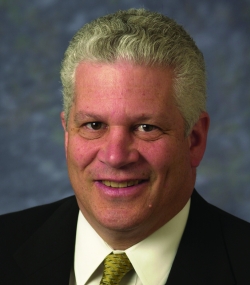 Rosen: Overall, we’re cautiously optimistic about 2009. The economic slowdown is far more pervasive than anyone anticipated going into 2008. If the new administration and Congress are able to implement economic recovery plans that’ll make money more available to consumers, loosen lending and reduce rates we should see price stabilization and some improvement by the end of 2009.
Rosen: Overall, we’re cautiously optimistic about 2009. The economic slowdown is far more pervasive than anyone anticipated going into 2008. If the new administration and Congress are able to implement economic recovery plans that’ll make money more available to consumers, loosen lending and reduce rates we should see price stabilization and some improvement by the end of 2009.
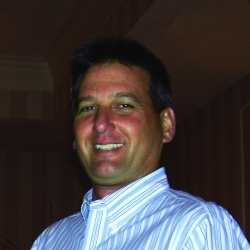 Reny: Orlando and much of the I-4 corridor will see flat to slightly declined sales activity through most of 2009. With that said, the areas that are currently selling well will continue to sell homes while experiencing slight pricing pressure of 5 to 10 percent due to increased foreclosures and job losses expected this year.
Reny: Orlando and much of the I-4 corridor will see flat to slightly declined sales activity through most of 2009. With that said, the areas that are currently selling well will continue to sell homes while experiencing slight pricing pressure of 5 to 10 percent due to increased foreclosures and job losses expected this year.
 Clayton: I think we’re going to see a slow recovery in 2009. We’ve already seen at the end of last year and in the beginning of 2009 a little more consumer confidence and we’re receiving calls about housing starts. Central Florida will soon be what it has always been—a leader in the housing industry. You have to think optimistically. I’m ready for an upbeat 2009 and I’m pumped up for the tail end of 2010. I don’t know if we are fully at the bottom when it comes to pricing, but we’re close.
Clayton: I think we’re going to see a slow recovery in 2009. We’ve already seen at the end of last year and in the beginning of 2009 a little more consumer confidence and we’re receiving calls about housing starts. Central Florida will soon be what it has always been—a leader in the housing industry. You have to think optimistically. I’m ready for an upbeat 2009 and I’m pumped up for the tail end of 2010. I don’t know if we are fully at the bottom when it comes to pricing, but we’re close.
What steps will builders be taking to remain competitive in 2009?
Rosen: Builders will continue to look closely at their land and construction costs. Consumers will likely see smaller, value-added homes in the marketplace.
Reny: Today’s environment calls for consistent monitoring of all aspects of the market, including job loss/growth, resales, foreclosures, short sales and buyer sentiment. Unfortunately being “competitive” today takes on a whole new meaning. I think you will see builders carving out a niche and focusing their core business in that direction.
Clayton: Builders are reducing staff and are forced to find different ways of doing things. Many are hiring per job instead of keeping workers on payroll. Builders must be leaner; some production levels are off as much as 40-50 percent. I don’t know any builders who are running at the capacity they were in 2005-06.? Fortunately for us, the custom home market still has more of a pulse to it.
What are the most pressing challenges in your industry for 2009?
Rosen: The biggest issues facing our industry are the availability of money to borrowers and the stabilization of pricing. We cannot continue in this cycle of low values being assigned to homes, which perpetuates even lower prices. I believe Congress should consider a new Housing Recovery Act that includes a true tax credit for homebuyers and lower housing interest rates for all buyers. This should be available for refinancing and for investors who agree to retain ownership for an extended period of time, which will also help with foreclosures and remove the glut of housing in the marketplace.
Reny: The most pressing challenge will be the stabilization of pricing.
Clayton: The financial markets have not allowed our buyers to buy homes. A lot of dynamics have changed. It’s tough since so many people have seen their net worth drop. Builders are ready to move their homes. We like to create, not sit around. It’s a good time for anyone who has a priority to build a home and has available money to buy.?
What new trends/offerings/projects can buyers expect to see from Orlando-area builders this year?
Rosen: Our customers have told us they’re looking to simplify their lives. As a result, we’re introducing new, smaller home plans in our communities and will continue to modify our features to give our owners the best value for their money. Also, Generation Y is just beginning to enter the marketplace and most research indicates they’re interested in smaller, more sophisticated homes. Builders will continue to integrate advanced technology into every aspect of their homes.
Reny: As we retool, we’ll be focused on housing that makes sense in a world of changing values. I think the trend will be smaller homes that live larger than their actual size with higher levels of energy efficient features.? While I don’t see a lot of new projects coming on line, I think we will see the revitalization of some existing projects with new players and product.
Clayton: There’s is a simplicity that is starting to emerge. For the most part, the upper-end homes will be more in the 5,000-square-foot range. We’ll not see as many large homes. Buyers want less square footage and more amenities.
Developers
Where do you see the pace of development in Central Florida in the upcoming year? Steady, decline or increase?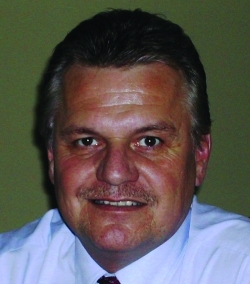 Hennen: I would expect to see most projects that are in the works continuing forward; the long-term fundamentals for Central Florida are very strong. The majority of forecasts point to 2009 as a recovery year of sorts, which means developers will take the opportunity to reposition their projects for the long-term. And the buyer’s market we’re currently in will begin to move toward a more balanced market.
Hennen: I would expect to see most projects that are in the works continuing forward; the long-term fundamentals for Central Florida are very strong. The majority of forecasts point to 2009 as a recovery year of sorts, which means developers will take the opportunity to reposition their projects for the long-term. And the buyer’s market we’re currently in will begin to move toward a more balanced market.
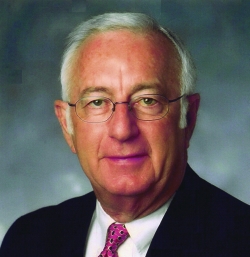 Cooper: Other than in the Lake Nona area, I think it will remain about the same as it is now, which is basically stopped if it’s residential; but perhaps in some pockets commercial development will be increasing slightly.
Cooper: Other than in the Lake Nona area, I think it will remain about the same as it is now, which is basically stopped if it’s residential; but perhaps in some pockets commercial development will be increasing slightly.
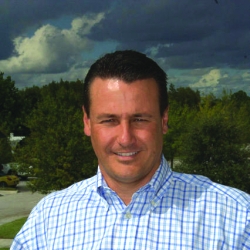 Tome: With 43,303 finished vacant lots in the four counties, which represent an 83.5 month supply, it’s hard to imagine more than 1,000 lots being developed and platted in 2009 throughout the entire Orlando MSA. This low quantity, and sharp annual decline from traditional numbers, is extremely healthy for the overall market—and necessary to accelerate a balance and recovery in Central Florida.
Tome: With 43,303 finished vacant lots in the four counties, which represent an 83.5 month supply, it’s hard to imagine more than 1,000 lots being developed and platted in 2009 throughout the entire Orlando MSA. This low quantity, and sharp annual decline from traditional numbers, is extremely healthy for the overall market—and necessary to accelerate a balance and recovery in Central Florida.
What are the top challenges that face developers planning in new communities?
Hennen: Many costs associated with development, such as impact fees and materials, have remained constant or increased, while the borrowing power and the equity position of buyers has definitely come down.
Cooper: With the present inventory of unsold developed lots, there probably won’t be any new residential developments of any significance. Plus financing is virtually at a standstill for new developments.
Tome: Market uncertainties, credit constraints and high fees remain paramount hurdles for developers trying to plan and execute what Central Florida needs, which is more affordable housing.? Additionally, the overwhelming supply of vacant developed lots in the Orlando MSA provide a significant challenge in assessing when to proceed with costly infrastructure in order to respond to market demand when a recovery does occur. We want to be on top of the wave, not under it.
What do you see as the hot spots for new development in Central Florida in 2009?
Hennen: The family home is still one of the best long-term wealth builders in this country. Developments offering families proximity to employment, schools and entertainment will command premiums.
Cooper: The only area I see as a hot spot for new development is the Lake Nona area.
Tome: Opportunities will be along and near the planned major roadway networks throughout Central Florida. Additionally, infill projects will be successful if promoted and supported by the local municipalities.
Are there any new development trends we should look out for in the near future?
Hennen: New communities will continue to be designed in a way that reduces environmental impact upfront and in the long-term; endless acres of water-guzzling turf grass will be out. I also anticipate more factory-built housing created primarily in a controlled environment and incorporating a high degree of technology and automation.
Cooper: I think the green developments make a lot of sense, and they will be the future.
Tome: Green initiatives and principles will further grow as a requirement in Central Florida. It will no longer be a nice thing to do, but rather a necessity to meet the demands of the consumer. In the same spirit, there’ll be more Traditional Neighborhood Developments (TND) that foster compactness, reduce development costs and conserve resources.
Realtors
What should buyers expect in terms of home pricing, availability and appreciation during the upcoming year?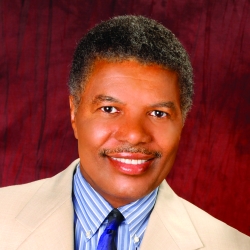 Simmonds: Buyers can expect to see the median price dip slightly for the first quarter of 2009 due to current unemployment issues. The lower median price will obviously increase the affordability index for first-time homebuyers, and they’ll have more homes to choose from. Consequently, appreciation in 2009 is not expected to be significant.
Simmonds: Buyers can expect to see the median price dip slightly for the first quarter of 2009 due to current unemployment issues. The lower median price will obviously increase the affordability index for first-time homebuyers, and they’ll have more homes to choose from. Consequently, appreciation in 2009 is not expected to be significant.
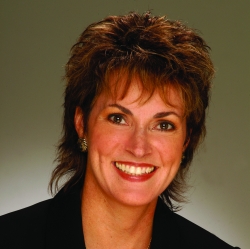 Gallagher McIver: For buyers in this marketplace, the world is their oyster. There is a good supply of great homes at bargain prices and the buyer is in the driver’s seat. But there probably will be little to no appreciation for a few years due to the large supply of current inventory.
Gallagher McIver: For buyers in this marketplace, the world is their oyster. There is a good supply of great homes at bargain prices and the buyer is in the driver’s seat. But there probably will be little to no appreciation for a few years due to the large supply of current inventory.
 Vance: Buyers should expect to see excellent opportunities. Pricing in most areas of Central Florida is back to 2004 levels. Sellers who haven’t yet reduced to meet that level will feel the pressure to do so in the near future.
Vance: Buyers should expect to see excellent opportunities. Pricing in most areas of Central Florida is back to 2004 levels. Sellers who haven’t yet reduced to meet that level will feel the pressure to do so in the near future.
How about new homes sales vs. existing home sales: have they, or will they affect each other?
Simmonds: The inventory for new homes is expected to remain low due to the economic impact that forced builders to abandon new construction. As a result, the sales of new homes are expected to be more brisk than existing homes because of the supply and anticipated demand. However, due to the low inventory of new homes, this should help the sales of existing homes.
Gallagher McIver: What I’m seeing right now in this market is that it’s a beauty pageant in a price war. The home that successfully attracts the buyer—condition, price and location—and wins his or her heart is the home that’s sold. The builder does have the ability to sometimes offer better incentives. Again, condition, price, and location are going to be the key factors, not necessarily new or existing. They’re both competing for the same buyer.
Vance: New home inventory will be almost completely absorbed in 2009. If buyers want a new home, they’ll need to consider building from scratch. Resales that are in move-in condition with recent updates will be the beneficiary of this hiatus in speculative building, which is at an all-time low due to lack of institutional lending to homebuilders.
What advice do you have for a buyer who has been waiting out the fluctuating market?
Simmonds: I would recommend they start now to engage the services of a Realtor to search for a home, to take advantage of the ability to negotiate prices and to lock in an attractive interest rate in the first quarter of 2009.
Gallagher McIver: Get out there and buy. Now is a great time with interest rates low, housing prices low and gas prices low. And if you’re a first-time homebuyer, you take advantage of the $7,500 tax credit that is available. I think our market will rebound faster than most due to the great things happening here in Orlando with the Burnham Institute, the UCF Medical School, the new VA Hospital, etc. It’s not going to stay like this forever.
Vance: Sophisticated buyers are already purchasing in the present market and finding excellent values. Buyers should start out by comparing homes on Realtor.com or other real estate Web sites, get a good handle on mortgage financing and work with a Realtor who isn’t shy about negotiating.
